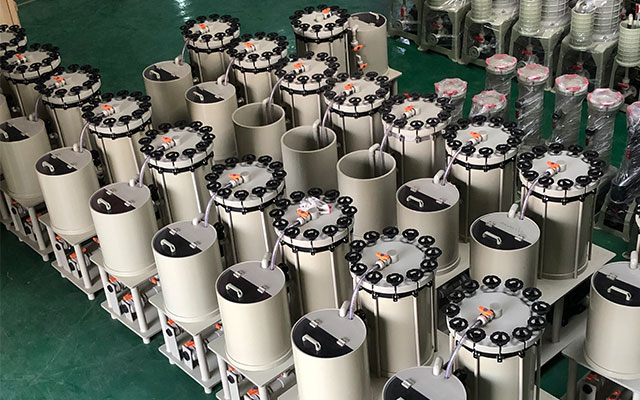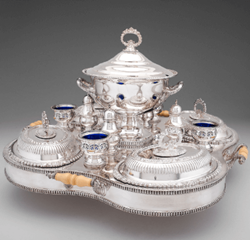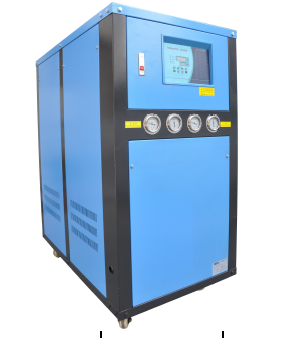Electrolytic treatment is a common method for removing impurities in the electroplating industry. Electrolytic treatment is also an electroplating process, but it is not for the purpose of obtaining a good plating layer, but for the purpose of removing impurities (or adjusting the content of the plating solution). The only difference is that the parts are not hung on the cathode, but instead are electroplated (also called pseudo-cathode) made by hanging to remove impurities. In the case of energization, impurities are deposited, attached or reduced to relatively harmless substances on the cathode electrolytic plate. In a few cases, the removal of impurities by electrolysis is also carried out on the anode, so that certain impurities which can be oxidized, when energized, oxidize to the anode and oxidize to a gas which escapes or becomes relatively harmless.
- Electrolysis is suitable for removing impurities that are easily removed or reduced in the electrode.
First,The electrolysis method is suitable for impurities which are easily oxidized or reduced on the electrode or reduced in content. The impurity ions with positive potential are more harmful, and are easily removed by electrolysis; on the contrary, the potential of the impurity is less harmful than the negative impurity.
Cyanide has a coordination mechanism for many metal ions, so that their precipitation potential becomes negative and it is not easy to be electrically resolved. Cyanide copper or copper alloy, cyanide silver plating, cyanide gold plating (including acid gold plating) plating solution, if low current electrolysis, it will be normal plating, the main precipitation on the cathode is copper or copper alloy, silver, gold It is ineffective for removing heavy metal impurities. Although the lead impurity can coordinate and react with cyanide, the lead impurity and the cyanate complex ion are very unstable, and almost completely hydrolyzed at a pH of 4. Pb “electrode potential is also relatively positive, and it is easy to electrodeposit in the low current region of the cathode. Therefore, in addition to the acid hard gold plating solution, lead impurities in the cyanide plating solution can be removed by low current electrolysis.
When the precipitation potential of the metal impurities is negative, it is necessary to electrolyze with a larger cathode current density, but the plating metal loss is excessive. For example, iron impurities in zinc chloride galvanizing solution affect the medium-high current region. If it is necessary to remove it by electrolysis, only high-current treatment can be used. In this case, the loss of zinc is too large, so it cannot be used by electrolysis. Suitable for chemical treatment.
Second, the choice of electrolysis conditions
The purpose of electrolysis referred to herein is to remove impurities in the plating solution, but it is accompanied by discharge deposition of main metal ions in the solution while removing impurities by electrolysis. In order to increase the rate of removal of impurities and slow down the deposition rate of the main metal ions in the solution, attention must be paid to the operating conditions of the electrolytic treatment.
(1) Current Density: In the case of electrolytic treatment, it is better to control the current density. In principle, it is necessary to follow the range of current density which adversely affects impurities during plating. That is to say, in the electroplating process, if the influence of impurities is reflected in the low current density region, the electrolysis treatment should be controlled at a low current density. If the influence of impurities is reflected in the high current density region, high current density should be selected. Electrolysis; if impurities have an effect in the high current density zone and the low current density zone, it can be electrolytically treated with a high current density for a period of time, and then switched to a low current density electrolytic process until the plating solution returns to normal. In general, impurities that can be removed by electrolysis at low current densities generally use low current density electrolysis in order to reduce the deposition of the main discharge metal ions in the plating solution. In fact, in the electroplating production, the influence of most impurities is reflected in the low current density region, so the current density of the electrolytic treatment is usually controlled between O.1A/dm2 and O.5A/dm2.
(2) Temperature and pH: The choice of temperature and pH during electrolytic treatment is, in principle, also dependent on the temperature and pH range at which the impurities are adversely affected by the plating. For example, copper impurities and NO3-impurities in a nickel plating solution have a greater influence at a lower pH, so when electrolytic removal of copper impurities and NO3-impurities in a nickel plating solution, low pH should be used for electrolysis, under such conditions. Underneath, the rate of removal of impurities is faster. Some impurities will be decomposed into gases during the electrolysis process (such as NO3-reduced to nitrogen oxides or ammonia at the cathode, Cl- is oxidized to Cl2 at the anode, etc.), then high-temperature electrolysis should be used to form the electrolysis process. The volatilization of the gas escapes (the solubility of the gas in the solution generally decreases with increasing temperature), preventing it from dissolving in the water and re-staining the bath.
According to the general rule, as the temperature of the plating solution increases, the rate of removal of impurities by electrolysis also increases, so when the heating has no effect on the main components of the plating solution, the electrolytic treatment should be carried out under heating. But in order to control what temperature is good, it is best to determine by small experiments.
(3) Stirring: Since the electrolytic treatment is removed by reacting impurities on the surface of the cathode (or anode), conditions should be created to allow the impurities to have sufficient contact with the electrode surface. Stirring can accelerate the movement of impurities and increase the chance of contact with the electrodes. Therefore, in order to improve the treatment effect, the plating solution should be stirred during electrolysis. According to foreign materials, ultrasonic treatment of the plating solution during electrolysis can improve the treatment effect. Therefore, in the conditional unit, the stirring of the plating solution should be accelerated as much as possible during the electrolytic treatment.
Third, the requirements of electrolytic treatment
(1) First, find out whether harmful impurities are derived from the electrolysis process: electrolytic treatment can remove some impurities, but sometimes it also produces impurities. For example, harmful impurities are derived from impure anodes, and such anodes are still used in electrolytic treatment. As the electrolysis process proceeds, impurities will accumulate more. If impurities are derived from the decomposition of certain compounds on the electrodes, then electrolysis This type of decomposition product will gradually increase. Such electrolytic treatment can not only purify the plating solution, but will constantly increase the contamination of the plating solution. Therefore, before the electrolytic treatment, necessary inspections are carried out to prevent harmful impurities from being generated during the treatment. The cathode (false cathode) area for electrolysis should be as large as possible: the removal of impurities by electrolysis is mostly carried out on the surface of the cathode, so increasing the cathode area can improve the efficiency of removing impurities while at the same time for different current density parts. Electrolytic removal of different impurities or the same impurities in the plating solution requires that the cathode for electrolysis be formed into a concave-convex surface (such as a corrugated shape), which can improve the effect of electrolytic treatment. However, the recess on the cathode should not be too deep to prevent the current density from being too small to allow impurities to be deposited or reduced at these locations.
(3) During the electrolysis process, it is necessary to brush the cathode regularly: since the electrolysis treatment time is generally long, in the long-term electrolysis process, loose deposits may be generated on the cathode, and its falling off will re-contaminate the plating solution, so After a period of electrolysis, the cathode should be taken out and brushed, and the loose or poor deposit on the cathode should be brushed off before electrolysis is continued.
(4) Before electrolytic treatment, it is best to do a small test to estimate the effect and time of the electrolytic treatment: Some impurities, it is difficult to remove them by electrolytic treatment. If electrolytic treatment is used blindly, it may take a long time and the bath can not return to normal. .
Since the small test takes less plating solution and the total amount of impurities is smaller, a sufficient amount of electricity is often supplied, and it can be seen in a short time whether or not the electrolytic treatment is effective. For example, take 2L of faulty plating solution, attach a cathode of about 2dm2 (corrugated shape), current 2A, electrolysis 4h bath solution basically improves, 5h bath solution returns to normal, then a small test shows that: per liter of faulty bath, pass Entering 5A•h power will make the bath return to normal.
From this, it can be estimated that if the faulty bath that needs to be handled is 1 OOOL, the power of about 5OOOA•h is needed. If the control current during the electrolytic treatment is 100A, then about 5Oh of electrolysis is required. Because the operating conditions of the small test and the large tank electrolysis are not exactly the same, the small test can not be used as the basis for the electrolysis treatment of the large tank. It can only be used as a kind of pre-estimate, and it is well known.
Finally, the electrolytic treatment method
Electrolysis treatment can be used both batch and continuous methods. The batch method is to stop the production when the plating solution is contaminated by impurities to affect the quality of the plating, and the cathode is replaced by an electrolytic plate for electrolytic treatment until the plating solution returns to normal and then it is converted into the official plating production.
The continuous method is to place a small auxiliary tank next to the plating tank. This auxiliary tank is specially used for electrolytic removal of impurities. The pump is used to pump the plating solution to be electrolyzed from the plating tank to the auxiliary tank while opening the auxiliary tank. An overflow port returns the electrolytically treated plating solution to the plating bath to keep the plating solution in the plating tank constantly circulated back and forth. The continuous process allows the electroplating and electrolysis processes to be simultaneously parallel without stopping production. This method is suitable for the operation of increasing the impurity content in the electroplating process, for example, zinc plating of zinc products, zinc impurities in nickel plating liquid are easy to grow; nickel plating of copper after bright sulfate plating, copper impurities in nickel plating liquid are easy to grow, if An auxiliary electrolytic cell is placed next to this type of nickel plating tank for continuous electrolysis, which can suppress the growth of zinc or copper impurities and prevent malfunction.
The continuous method can only be carried out when the impurity content has not risen to affect the quality of the product. Otherwise, if the impurity content has reached the influence of the coating quality, then the content of the impurity must be reduced to the allowable range by the batch method, and then converted to the continuous method. Perform electrolysis.





